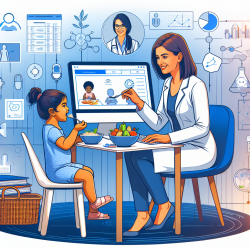Introduction
In the dynamic field of speech-language pathology, integrating insights from genetic research can significantly enhance therapeutic outcomes for children. The recent study titled "Genetic analyses of DNA repair pathway associated genes implicate new candidate cancer predisposing genes in ancestrally defined ovarian cancer cases" provides valuable insights that can be leveraged to refine our approaches in speech-language therapy.
Understanding the Genetic Landscape
The study explores the genetic underpinnings of ovarian cancer, focusing on DNA repair pathways and identifying new candidate genes that may predispose individuals to cancer. Although the primary focus is on cancer predisposition, the methodologies and findings have broader implications, particularly in understanding genetic influences on various conditions, including those affecting communication and cognitive development in children.
Implications for Speech-Language Pathology
Speech-language pathologists can draw parallels between the genetic predispositions identified in the study and potential genetic influences on speech and language disorders. By understanding the genetic factors that may contribute to these disorders, practitioners can tailor their interventions more effectively.
- Data-Driven Decisions: Utilizing genetic data to inform therapy plans can lead to more personalized and effective interventions.
- Early Identification: Recognizing genetic markers associated with speech and language disorders can facilitate early intervention, which is crucial for improving long-term outcomes.
- Interdisciplinary Collaboration: Collaborating with geneticists and other healthcare professionals can enhance the understanding of genetic influences on speech and language development.
Encouraging Further Research
While the study provides a foundation, further research is needed to explore the direct implications of genetic findings on speech-language pathology. Practitioners are encouraged to engage in or support research initiatives that investigate the genetic basis of communication disorders.
Additionally, incorporating genetic counseling into the therapeutic process can provide families with a comprehensive understanding of potential genetic influences on their child's development, empowering them to make informed decisions about their child's care.
Conclusion
Integrating genetic insights into speech-language pathology not only enhances the effectiveness of interventions but also aligns with a holistic approach to child development. By embracing data-driven strategies and fostering interdisciplinary collaboration, speech-language pathologists can significantly improve outcomes for children with communication disorders.
To read the original research paper, please follow this link: Genetic analyses of DNA repair pathway associated genes implicate new candidate cancer predisposing genes in ancestrally defined ovarian cancer cases.










